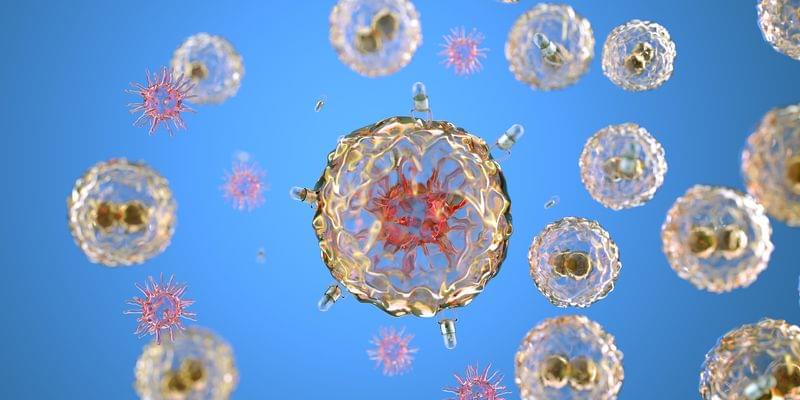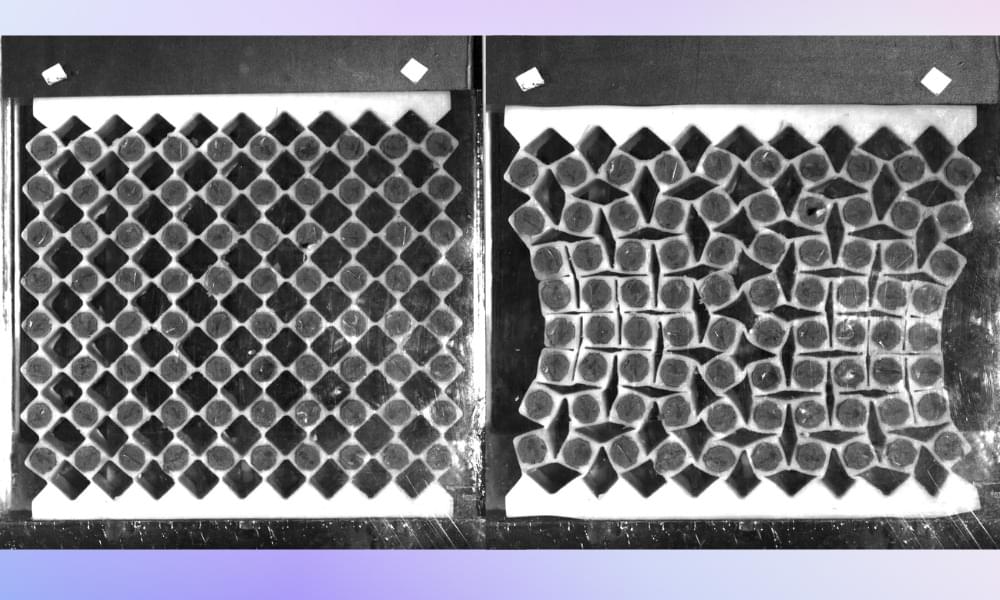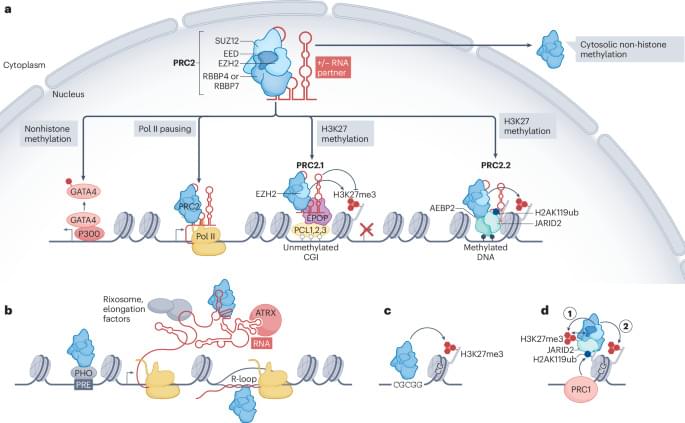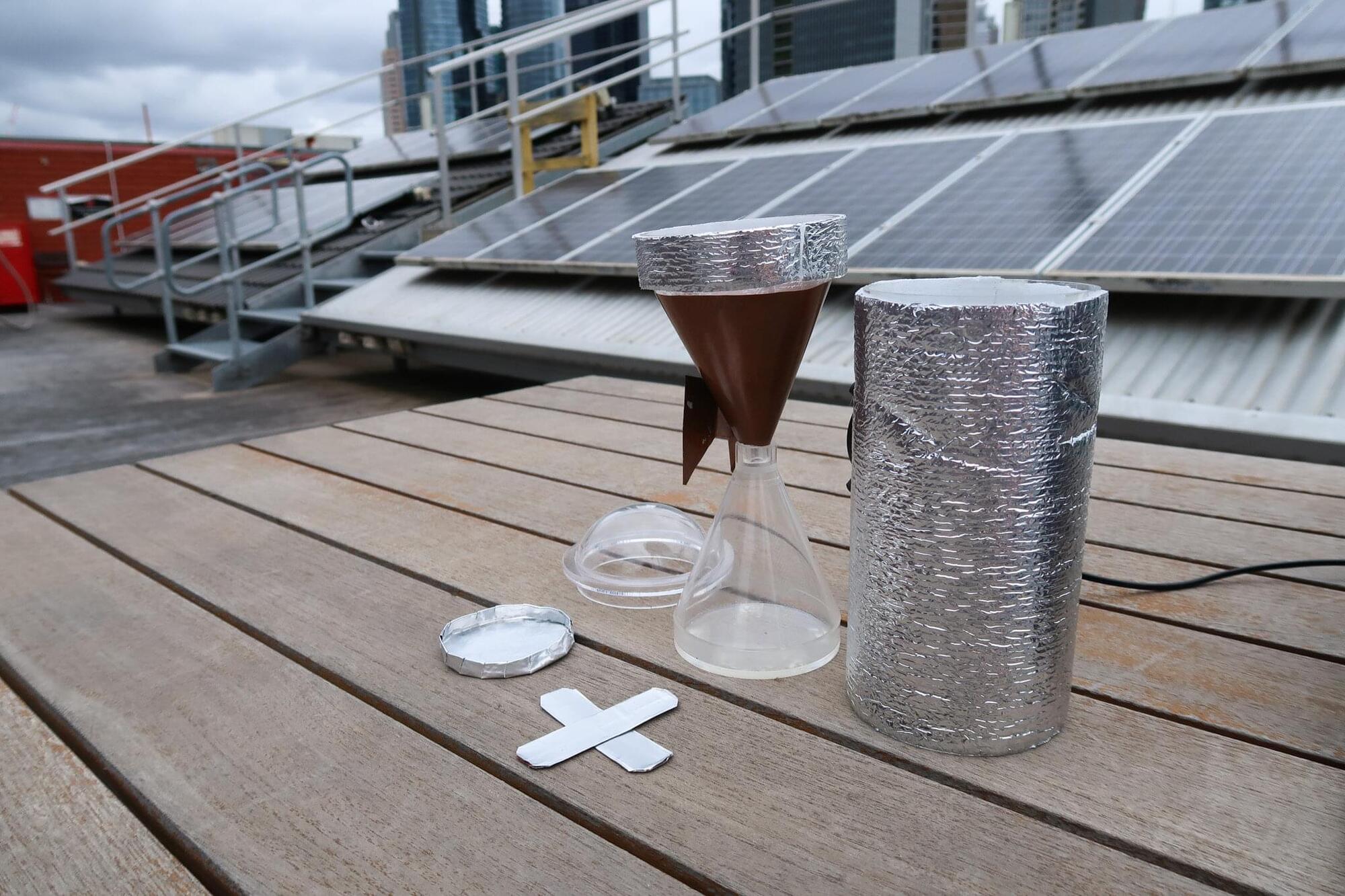Long used in Indigenous Brazilian rituals, the jurema preta plant, which contains a potent psychedelic, is gaining ground as a potential treatment for depression.
This “DNA origami” may facilitate the transportation of large therapeutic loads into cells
Researchers from Universidad Carlos III de Madrid (UC3M) and Harvard University have experimentally demonstrated that new artificial materials known as metamaterials, with magnetic properties, can have their mechanical and structural behavior reprogrammed without altering their composition. This breakthrough could drive innovations in fields such as soft robotics and biomedicine.
The study explains how flexible magnets embedded within the structure of mechanical metamaterials can be used to reprogram their behavior.
The integration of flexible magnets in metamaterials allows for reprogrammable structures, offering vast potential in robotics and biomedical engineering.
Until now, only expensive and slow electron microscopes could reach this level of detail. But LICONN opens the door for more labs around the world to explore the brain’s cellular “wiring diagram” using tools they already have. It’s like giving everyone a high-powered zoom lens for decoding how the brain works, learns, and perhaps breaks down in disease.
In collaboration with the Institute of Science and Technology Austria (ISTA), we published in Nature the first-ever method for using light microscopy to comprehensively map all the neurons and their connections in a block of brain tissue. The key finding from this validation experiment is that this approach works as well as electron microscopy-based connectomics.
Our brain is a complex organ. Billions of nerve cells are wired in an intricate network, constantly processing signals, enabling us to recall memories or to move our bodies.
Making sense of this complicated network requires a precise look into how these nerve cells are arranged and connected. “LICONN,” a new microscopy method developed by scientists at the Institute of Science and Technology Austria (ISTA) and Google Research, now helps piece together this puzzle.
Light microscopes have been evolving for centuries. Scientists use light microscopy to—literally and figuratively—illuminate the most intricate biological structures. However, unraveling the complex details and architecture of the brain remains a seemingly impossible challenge, considering its billions of densely packed neurons, each linked to other cells via thousands of synapses.
This Perspective discusses unresolved questions about how the chromatin modifier Polycomb repressive complex 2 (PRC2) binds RNA in vivo and the functional consequences of binding. The authors posit that RNA conformation is integral to PRC2 control and thus to regulation of chromatin state.
“Faster Than Anything Ever Seen”: Mind-Blowing Speed of Quantum Entanglement Measured for the First Time in Scientific History
Posted in particle physics, quantum physics | Leave a Comment on “Faster Than Anything Ever Seen”: Mind-Blowing Speed of Quantum Entanglement Measured for the First Time in Scientific History
IN A NUTSHELL 🔬 Scientists have measured the speed of quantum entanglement for the first time, marking a major milestone in quantum physics. 💡 The study uses attosecond precision to track electron motion, offering unprecedented insight into quantum dynamics. 🔗 Quantum entanglement shows how particles can be interconnected over vast distances, defying traditional physics. 🚀
How a group of passionate teachers became full-fledged NASA educator astronauts—and brought STEM to students everywhere.
Engineers from Australia and China have invented a sponge-like device that captures water from thin air and then releases it in a cup using the sun’s energy, even in low humidity where other technologies such as fog harvesting and radiative cooling have struggled.
The water-from-air device remained effective across a broad range of humidity levels (30–90%) and temperatures (5–55 degrees Celsius).
Senior researcher Dr. Derek Hao, from RMIT University in Melbourne, said the invention relied on refined balsa wood’s naturally spongy structure, modified to absorb water from the atmosphere and release it on demand.
A new study suggests that, in the case of global catastrophe, urban agriculture alone could sustain only about one fifth of the population of a temperate, median-sized city, but the whole city could be fed by also farming land within a short distance of the urban area.
Matt Boyd of Adapt Research Ltd, New Zealand, and Nick Wilson of the University of Otago, New Zealand, present these findings in PLOS One.
Abrupt global catastrophes—such as nuclear wars, extreme pandemics, or solar storms—could severely hamper global trade. Shortages of resources like liquid fuels could disrupt food production and transport, possibly leading to famine. Prior research has suggested that this impact could be mitigated by urban agriculture, which includes such approaches as home, community, and rooftop gardens.









